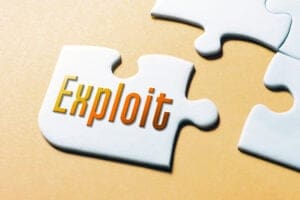Entrapment Defense: When Law Enforcement Goes Too Far
The entrapment defense is a crucial legal concept that addresses situations where law enforcement officers or their agents induce or coerce individuals to commit crimes they would not have otherwise committed. This defense serves as a safeguard against overzealous police tactics and protects citizens from being unfairly prosecuted for crimes they were pressured into committing. Understanding the intricacies of entrapment is essential for both legal professionals and the general public, as it highlights the delicate balance between effective law enforcement and the protection of individual rights.
At its core, the entrapment defense challenges the validity of criminal charges by arguing that the defendant’s actions were the result of improper government conduct rather than their own criminal predisposition. This legal principle recognizes that while law enforcement agencies have the authority to investigate and prevent crime, there are limits to the tactics they can employ. When these limits are exceeded, the entrapment defense provides a means for defendants to seek justice and avoid conviction for crimes they were unfairly induced to commit.
The concept of entrapment has evolved significantly since its inception in the early 20th century. Initially recognized by the United States Supreme Court in the 1932 case of Sorrells v. United States, the entrapment defense has since been refined and interpreted through numerous court decisions and legislative actions. Today, while the specific application of the entrapment defense may vary between jurisdictions, its fundamental purpose remains consistent: to protect individuals from being punished for criminal conduct that was essentially manufactured by the government.
One of the key elements in understanding the entrapment defense is the distinction between merely providing an opportunity to commit a crime and actively inducing someone to do so. Law enforcement agencies are generally permitted to create scenarios that allow individuals to commit crimes if they are so inclined. This might include undercover operations, sting operations, or other investigative techniques designed to catch individuals who are already predisposed to criminal activity. However, when officers go beyond simply presenting an opportunity and instead actively persuade, threaten, or manipulate an otherwise law-abiding person into committing a crime, the line into entrapment may be crossed.
The application of the entrapment defense typically involves two primary tests: the subjective test and the objective test. The subjective test, which is used in federal courts and many state jurisdictions, focuses on the defendant’s predisposition to commit the crime. Under this test, the key question is whether the defendant was already inclined to engage in the criminal activity before being approached by law enforcement. If the prosecution can demonstrate that the defendant had a preexisting intention or willingness to commit the crime, the entrapment defense is likely to fail.
Conversely, the objective test, adopted by some states, places greater emphasis on the conduct of law enforcement officers. This approach examines whether the tactics used by the police would be likely to induce a normally law-abiding person to commit a crime. The objective test is less concerned with the defendant’s personal predisposition and more focused on the appropriateness of police behavior. Under this standard, if the court determines that the police actions were excessively coercive or manipulative, the entrapment defense may succeed regardless of the defendant’s prior inclinations.
One of the challenges in applying the entrapment defense is balancing the need for effective law enforcement with the protection of individual rights. Undercover operations and sting operations are often necessary tools for investigating and preventing serious crimes, particularly in areas such as drug trafficking, terrorism, and organized crime. However, these tactics can sometimes blur the line between legitimate investigation and improper inducement. Courts must carefully consider the specific circumstances of each case to determine whether law enforcement actions crossed the threshold into entrapment.
The burden of proof in entrapment cases can vary depending on the jurisdiction and the specific test being applied. In many cases, the defendant bears the initial burden of raising the entrapment defense and providing some evidence to support it. Once the defense has been raised, the burden often shifts to the prosecution to prove beyond a reasonable doubt that the defendant was not entrapped. This allocation of the burden reflects the serious nature of the entrapment claim and the potential consequences of police misconduct.
One of the most significant challenges in successfully asserting an entrapment defense is overcoming evidence of the defendant’s predisposition to commit the crime. Prosecutors may present evidence of the defendant’s criminal history, prior similar conduct, or statements indicating a willingness to engage in illegal activities. This evidence can be particularly damaging under the subjective test, as it may demonstrate that the defendant was already inclined to commit the crime regardless of law enforcement involvement.
The role of confidential informants in entrapment cases adds another layer of complexity to these legal proceedings. Confidential informants are often used by law enforcement agencies to gather information and facilitate undercover operations. However, the actions of these informants can sometimes lead to entrapment claims, particularly if they are overzealous in their efforts to secure arrests or convictions. Courts must carefully scrutinize the relationship between law enforcement agencies and their informants to ensure that the boundaries of proper conduct are not crossed.
The entrapment defense intersects with several other important legal concepts, including due process rights and the exclusionary rule. In some cases, police conduct may be so egregious that it violates the defendant’s constitutional rights to due process, even if it does not meet the specific criteria for entrapment. Additionally, evidence obtained through entrapment may be subject to exclusion from trial, similar to evidence obtained through illegal searches or coerced confessions.
One area where the entrapment defense has been particularly relevant in recent years is in cases involving online sting operations. As law enforcement agencies increasingly use the internet to investigate and prevent crimes such as child exploitation and terrorism, questions have arisen about the appropriate limits of these digital undercover operations. Courts have had to grapple with issues such as whether creating fake online profiles or engaging in extended online conversations with suspects constitutes entrapment.
The application of the entrapment defense in terrorism cases has been a subject of significant legal and public debate. Given the serious nature of terrorism offenses and the government’s strong interest in preventing attacks, courts have often been reluctant to accept entrapment defenses in these cases. However, some high-profile terrorism prosecutions have raised questions about the tactics used by law enforcement agencies, particularly in cases involving vulnerable or mentally unstable individuals who may have been unduly influenced by undercover agents.
Another important consideration in entrapment cases is the potential impact on plea bargaining and sentencing. The possibility of raising an entrapment defense may influence a defendant’s decision to accept or reject a plea offer. Additionally, even if an entrapment defense is not successful at trial, evidence of police misconduct or overreaching may be considered as a mitigating factor during sentencing.
The entrapment defense also raises important questions about police accountability and oversight. Successful entrapment defenses can shed light on problematic law enforcement practices and may lead to internal investigations or policy changes within police departments. Some jurisdictions have implemented additional training and guidelines for undercover operations to help prevent entrapment situations and ensure that investigations are conducted within legal and ethical boundaries.
The role of expert testimony in entrapment cases can be crucial, particularly in jurisdictions that apply the objective test. Experts in law enforcement practices, psychology, or other relevant fields may be called upon to testify about the likely effects of certain police tactics on an average person’s behavior. This testimony can help judges and juries better understand the complex dynamics at play in entrapment scenarios.
One of the challenges in applying the entrapment defense is its interaction with other legal defenses. For example, a defendant might claim entrapment while simultaneously arguing that they lacked the necessary intent to commit the crime. Balancing these potentially conflicting defenses requires careful legal strategy and a thorough understanding of the specific facts of the case.
The entrapment defense can also intersect with issues of racial profiling and discriminatory law enforcement practices. Critics have argued that certain undercover operations and sting tactics disproportionately target minority communities, raising questions about the fairness and equity of these law enforcement strategies. Courts may need to consider these broader social and ethical implications when evaluating entrapment claims.
The use of technology in law enforcement operations has introduced new complexities to the entrapment defense. For instance, the use of artificial intelligence and data analytics to identify potential criminal activity may raise questions about whether individuals are being unfairly targeted or manipulated into committing crimes. As technology continues to advance, courts will likely face new challenges in applying traditional entrapment principles to these modern investigative techniques.
The entrapment defense also highlights the importance of proper police training and supervision. Law enforcement agencies must ensure that their officers understand the legal boundaries of undercover operations and are equipped to make ethical decisions in complex situations. Inadequate training or oversight can increase the risk of entrapment scenarios and potentially undermine legitimate criminal investigations.
Another important aspect of the entrapment defense is its relationship to the broader concept of outrageous government conduct. While entrapment focuses specifically on the inducement of criminal activity, the outrageous government conduct defense addresses more extreme cases of law enforcement misconduct. In some jurisdictions, courts have recognized that certain police actions may be so egregious that they violate due process rights, even if they do not meet the specific criteria for entrapment.
The entrapment defense can also intersect with issues of mental health and vulnerability. In cases where defendants have mental health conditions or other vulnerabilities that make them more susceptible to persuasion or manipulation, courts may need to consider these factors when evaluating entrapment claims. This raises complex questions about the responsibility of law enforcement agencies when dealing with potentially vulnerable individuals in undercover operations.
The role of prosecutorial discretion in entrapment cases is another important consideration. Prosecutors have significant latitude in deciding whether to pursue charges in cases where entrapment may be a viable defense. Ethical prosecutors must carefully evaluate the circumstances of each case and consider whether proceeding with prosecution serves the interests of justice, particularly in situations where police conduct may have been questionable.
The entrapment defense also raises interesting questions about the nature of criminal intent and free will. By arguing that they were induced to commit a crime they would not have otherwise committed, defendants essentially claim that their actions were not the result of their own free choice. This philosophical aspect of the entrapment defense touches on fundamental questions about criminal responsibility and the limits of personal autonomy in the face of external pressures.
In conclusion, the entrapment defense serves as a crucial check on law enforcement power and helps ensure that individuals are not unfairly prosecuted for crimes they were pressured into committing. While the specific application of the defense may vary between jurisdictions, its fundamental purpose remains consistent: to protect citizens from overzealous or unethical police tactics. As society continues to evolve and new challenges emerge in the realm of law enforcement, the entrapment defense will likely continue to play an important role in balancing the needs of effective crime prevention with the protection of individual rights and liberties.
Understanding the nuances of the entrapment defense is essential for legal professionals, law enforcement agencies, and the general public alike. By recognizing the boundaries of acceptable police conduct and the circumstances under which the entrapment defense may apply, we can work towards a more just and equitable criminal justice system. As technology advances and new investigative techniques emerge, the principles underlying the entrapment defense will continue to be tested and refined, ensuring that this important legal safeguard remains relevant and effective in protecting the rights of individuals in the face of potential law enforcement overreach.
Website Citations:
- https://www.justice.gov/archives/jm/criminal-resource-manual-645-entrapment-elements
- https://www.law.cornell.edu/wex/entrapment
- https://www.americanbar.org/groups/litigation/committees/criminal/articles/2019/winter2019-entrapment-defense/
- https://www.nolo.com/legal-encyclopedia/entrapment-basics-33987.html
- https://www.justia.com/criminal/defenses/entrapment/
Citations:
https://barkanresearch.com/entrapment/
https://www.egattorneys.com/entrapment-as-a-defense
https://caselaw.findlaw.com/court/us-supreme-court/356/369.html
https://thefernandezfirm.com/entrapment-defense/
https://openscholarship.wustl.edu/cgi/viewcontent.cgi?article=6082&context=law_lawreview
https://www.hmichaelsteinberg.com/understanding-the-defense-of-entrapment.html
https://www.newjerseycriminallawattorney.com/criminal-process/what-does-entrapment-mean-in-a-legal-case/
https://law.bepress.com/cgi/viewcontent.cgi?article=1358&context=expresso


















